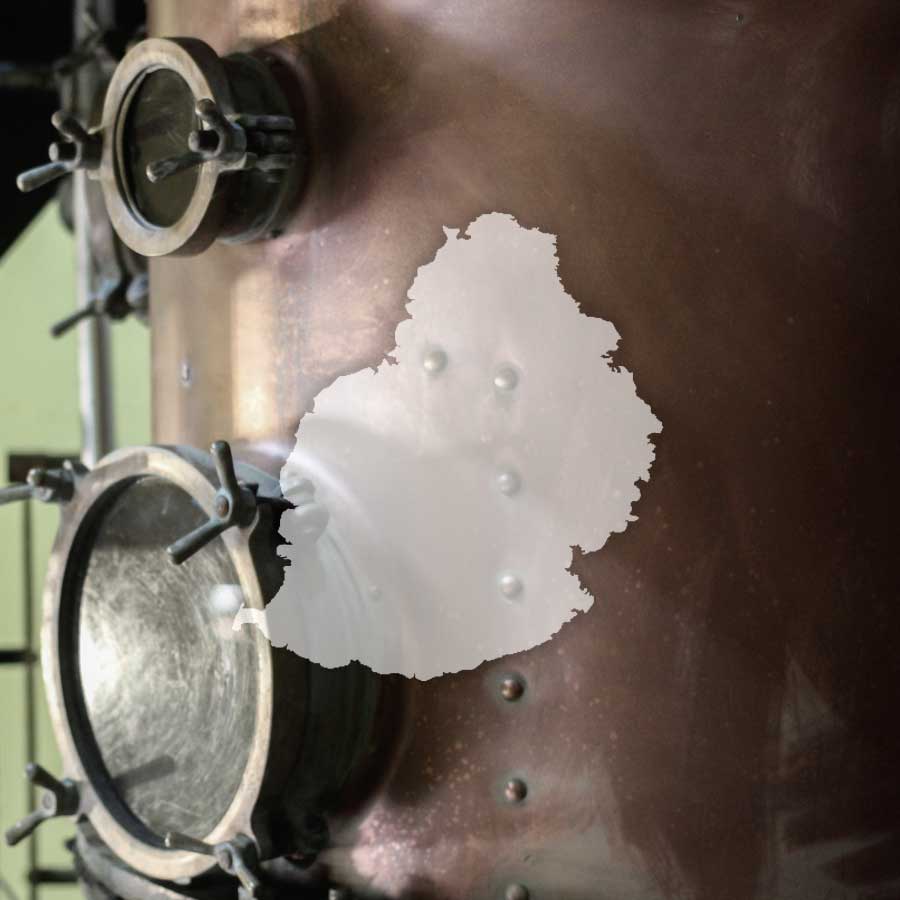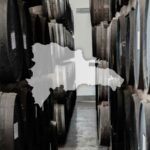Rum from Mauritius, get to the bottom of the bottle
Why does a rum from Mauritius develop this aromatic profile? Let’s go from the bottle to the cane to find out.

How about a visit to your local wine specialist? No, I know, you don’t need any encouragement to visit him and make new discoveries.
Today, after having tried the rums of Reunion Island, you’d like to learn more about the cane brandies produced on the neighboring island of Mauritius.
You’re far from having a precise idea about these rums (which, as we shall see, is quite normal), so you turn to your purveyor of quality liquids.
It evokes the wide variety of rums produced on this little piece of land lost in the Indian Ocean, and the youthfulness of the industry.
As you can see, you’re going to have to buy (at least) two more bottles to get a clearer picture. You were right, as he steers you towards a bottle of white rum and another of aged rum.
When you ask him if there’s an order to tasting, you’re surprised to hear his reply: “It doesn’t matter”. Well, now you’re well on your way.
Back in your tasting den – and having washed your hands, because it’s important – you grab two special glasses (also known as tulip glasses), into which you pour a few centilitres of each rum.
You decide, almost out of habit, to start this session with white rum, and it’s a slap (or caress) of cane that welcomes you.
Here’s a surprise for you. Without really explaining why, you thought you were dealing with a molasses rum, but here, there’s no room for doubt.
As you dip your nose into it, you find certain aromatic cues that you’ve come across on several occasions in rums made from the fermentation of vesou (the name given to fresh cane juice). Fruits are very present (including a zest of lime), accompanied by more herbaceous touches and a pinch of spice. Above all, however, ripe, fat cane dominates.
This “agricultural” rum, which cannot bear the name, is very much to your taste. It doesn’t seem very different from Guadeloupe or Martinique rums distilled on column after a relatively short fermentation, although it does offer a noticeable intensity.
This very expressive facet, which you may have noticed, comes from the distillation apparatus used here, a pot still. What’s even more noteworthy is the absence of the metallic notes that can sometimes mark this kind of distillate, which is not to your displeasure.
Until 2001, rum producers were legally prohibited from using cane juice as a raw material. What’s more, the “rhum de coulage” (the rum that comes out of the still) had to be higher than 93%.
Suffice it to say that Mauritius is in its infancy when it comes to pure cane juice rums. Some of the island’s distilleries make it their specialty (three of the six in the territory – yes, there are six distilleries on the island).
The second glass is waiting for you and it’s time to devote yourself to it, wondering if you shouldn’t have started with this one. It, too, presents an intense and – logically – very different profile.
Fruits are at the forefront, exotic or yellow-fleshed, juicy and greedy. Then come the spices, very present, including pepper, clove and vanilla.
Unheard of in your nostrils, it appeals to you and you think it’s sugar rum (and therefore made from molasses), but you can’t tell any more than that.
In fact, this is an industrial rum (using the residue of the sugar industry) and this, to your great surprise, is distilled at a high degree, since we’re over 90%, without however reaching the critical 96% threshold, above which the aromas tend to disappear (hello vodka).
The fact that it is so rich is due not only to the work carried out on the yeasts used, but above all to the crucial ageing stage.
It’s in the cellar that the magic happens, thanks to the use of new and ex-cognac French oak barrels.
You may recall that a similar process is used in Réunion’s main distilleries. Similar to Cognac methods, the distillate spends a few months in new barrels, before being transferred to red barrels (already used several times, they bring little tannin and promote oxygenation of the liquid).
The combination of a light (but far from insipid) distillate with a great deal of ageing and blending work enables us to tailor our rums to the desired result.
This clearly makes you want to explore this universe.
In any case, you now understand that whatever your order of tasting, you couldn’t go wrong, as these rums both have sufficiently strong identities.
But that’s not all, as all combinations are possible: white rum from molasses, old rum pure juice (in continuous or discontinuous distillation), the use of various wood essences… and why not spiced or arranged rums?
And therein lies the richness of this origin: a huge variety and rapid expansion of rum production, often overseen by industry experts with a bottle (of rum, of course).
You can see where I’m going with this: it’s going to take time and multiple tastings for you to grasp all that rums from Mauritius have to offer. Fortunately, you’re ready to tackle the task! I salute your self-sacrifice.




